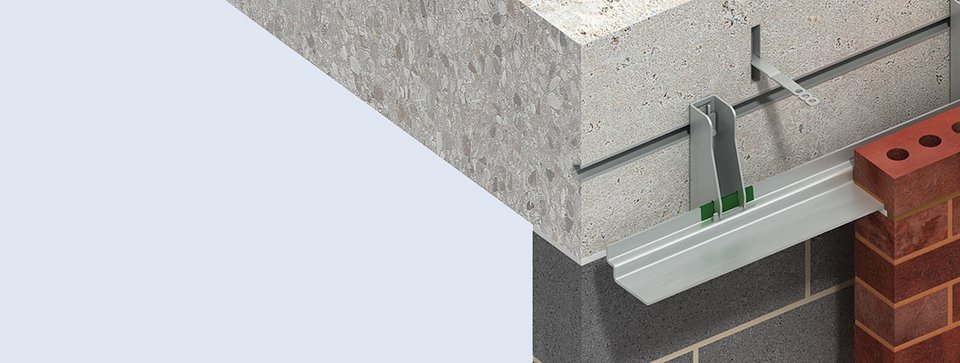
Ancon Cast-in Channels
Cast-in Channels

Cast-in Channels range from simple self-anchoring slots for accepting restraint fixings to large capacity channels with integral anchors. They provide the necessary adjustment required when fixing to concrete and can eliminate site drilling. Nail holes aid the fixing of channels to timber formwork and infill prevents the ingress of concrete during casting.
Ancon Cast-in Channels have been independently tested to the current British Standard BS 5080, Parts 1 and 2. The anchor shapes of Ancon Channels are outside current European Technical Assessment documents and therefore these products cannot be CE marked.
Channel profiles available for casting in are: 21/18, 28/15, 38/17, 30/20, 40/25, 49/30 and 54/33.
Ancon 30/20
Ancon 30/20 is a high performance channel. The unique shape allows the applied load to be fed directly from the channel lips to the anchors and the more compact section size improves its fit between reinforcement. Specially designed T-head bolts ride up the sloping sides of the channel and securely lock behind the front lips. 30/20 is filled with continuously extruded closed-cell PE-LD foam. This material is removed easily in long sections and is 100% recyclable.
Ancon 30/20 should be used in preference to 38/17 channel. 30/20 is a high performance channel and its lower material content offers considerable cost benefits.
Ancon CombiDeck edge support is supplied with an integral channel section, normally 30/20. Further details on CombiDeck can be found in the here.


Latest News
Leviat Launches New 300mm Type 4 Wall Tie for Wider Cavities
Leading construction accessories manufacturer, Leviat, announces the release of its new Ancon Staifix HRT4 300mm Wall Tie designed for use in wider walls with cavities ranging from 151-175mm. The addition of this product to the existing range will help specifiers and builders to meet the latest Part L regulations and achieve the more stringent U-values and building fabric requirements in the upcoming Future Homes Standard.
Enhanced Ancon IHR Head Restraints Now Accommodate 100mm Gaps Due to Customer Demand
Due to customer demand and changes to fire regulations, Leviat have successfully re-engineered the Ancon IHR range of internal head restraints, now accommodating gaps at the wall head of up to 100mm, extending the previous maximum of 75mm.
